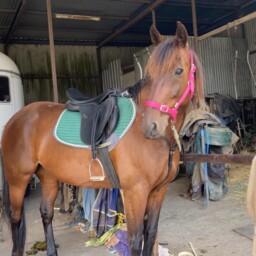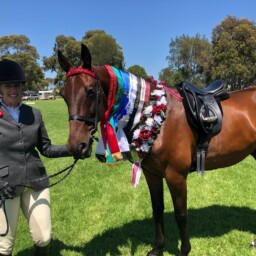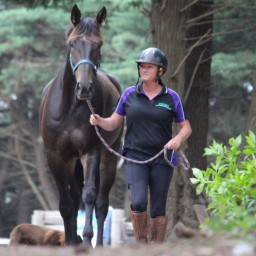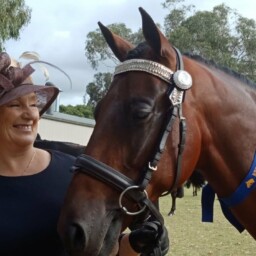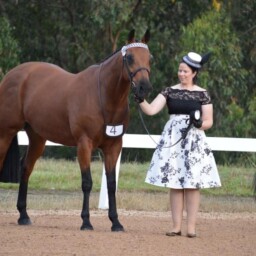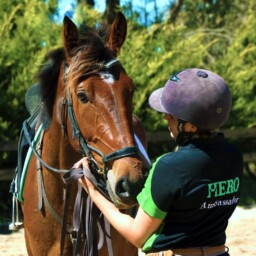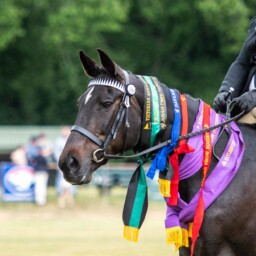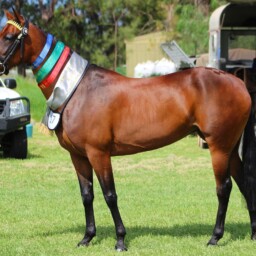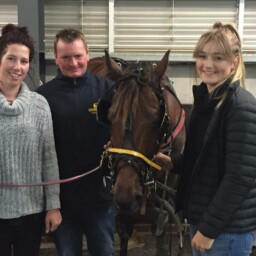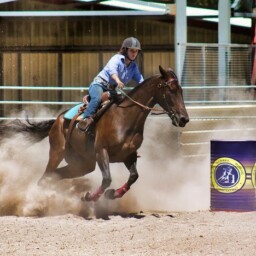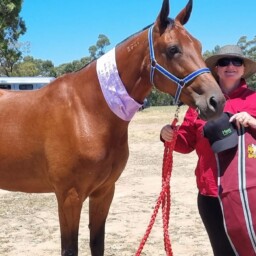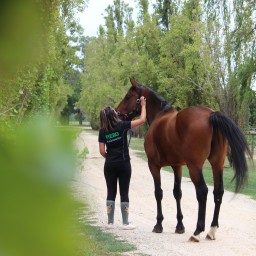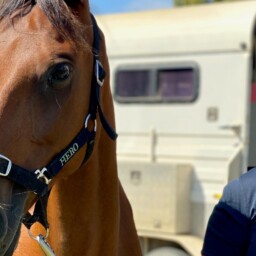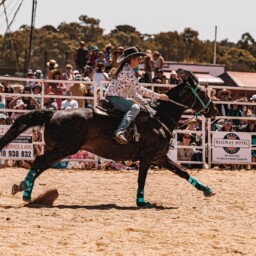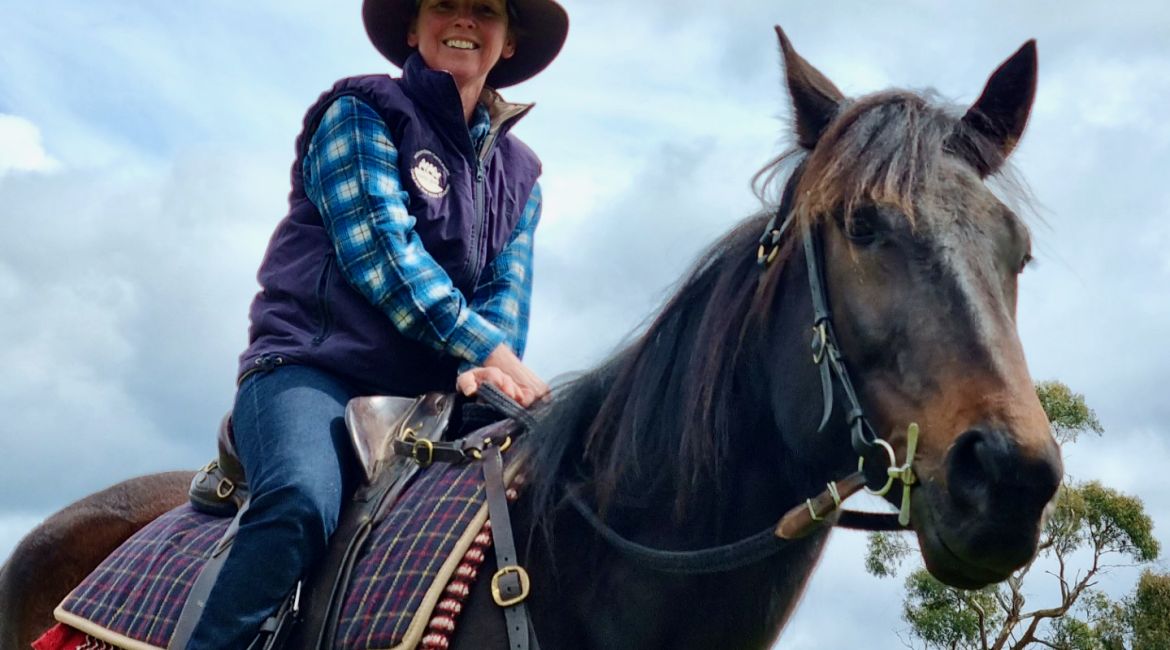
Having been first introduced to standardbreds over two decades ago, Pene Gregson has built a long-standing appreciation for the capabilities of this hardy breed of horse.
“Kevin Higgins, who I’ve worked with for the past twenty-odd years, uses a lot of standardbreds for his Snowy Range Tours business, based in Victoria’s High Country”, Pene explains.
“Standardbreds make fantastic horses for the trails because they’re so tough. They’ve got great feet, strong backs, are sensible, smart and exposed to so much during their racing careers that nothing really fazes them”.
Gracing the saddle of countless standies over the years, Pene has welcomed three into her family.
The first was a sensible, kind gelding by the name of Huntly, with whom Pene shared nearly a decade of adventures with.
“I got Huntly from a neighbour many years ago and he had the most beautiful soul”, Pene explains.
“We have the Lerderderg and Wombat State Forests at the end of our road and I do a lot of riding through the bush.
“I’ve got a lot of friends who normally do arena work and they’ve found a newfound respect for standies because they normally just borrow one of mine, to join me on the trails.
“I’ve had so many friends get back into bush riding on Huntly and they loved how versatile he was and light on your hands he would be. I taught him to neck rein and he had the softest mouth.
“Saying goodbye to Huntly was just the hardest thing, because he was my heart horse. It didn’t matter who or how often other people would ride him, he was very much my horse and we shared a strong bond”.
Joining Huntly out on the trails was Pene’s next standardbred, Bear (who raced as Cosell). Bear was a big, athletic horse, who very much enjoyed having a job to do.
“When I first got Bear from his Hero retrainer he had a good foundation of training, but was a bit of a worrier. I probably spent the first two or three rides out just leading him whilst I rode Huntly”, Pene explains.
“Huntly and I took Bear through the bush and local roads, where he was exposed to tractors, motorbikes, native animals and a lot of other new sights and sounds. By the time I was ready to get on and ride Bear out, he was as right as rain. I think letting him take a look around really helped his confidence”.
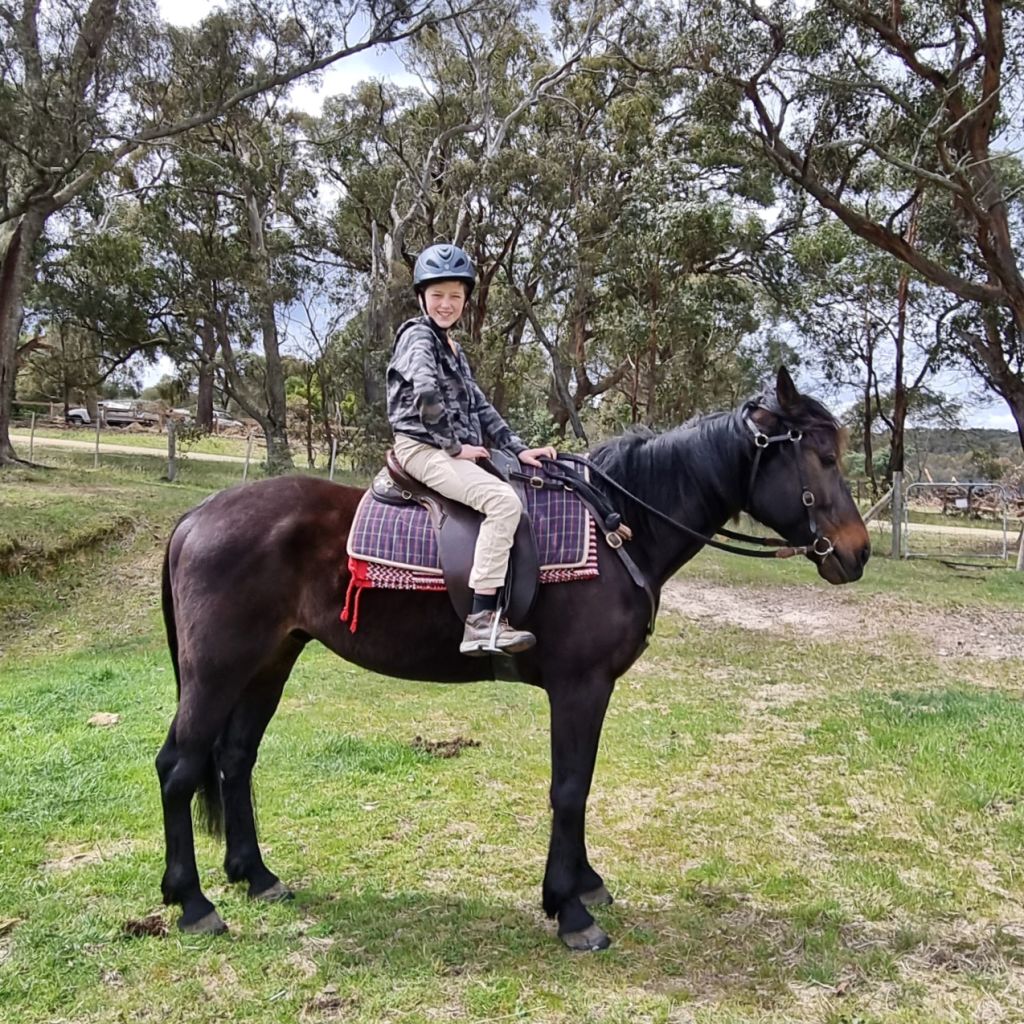
Pene and Bear shared around three years of trekking together, before Pene conceded that their aspirations weren’t aligned.
“Bear was a strong, sensitive, burly boy and he really needed a bigger job to do than bush riding. I sold him to my friend Jess, who is teaching him dressage and jumping. He really loves having something to do with his brain and they’re going so well together!”, Pene explains.
With her thirteen-year-old son Harry taking to riding, Pene began the search for a new horse to join the family.
Having had a great experience sourcing Bear, Pene started her search through the Hero Retrainer listings for her next harness racing retiree.
“I wanted something quiet, so I have a safe junior horse and the advantage of something quiet in the paddock that friends can jump on when they come to visit”, Pene says.
“When we went to look at Jethro (a gentle gelding who raced as Aldebaran Jethro and was started under saddle by Hero Retrainer Lisa North, of Park View Drive Equestrian), I knew that he was quiet. I trusted Jethro instantly and put my son Harry, who is a very relaxed rider, aboard. Harry loved him immediately.
“After Harry had a little potter around the arena, my friend also had a ride. Jethro took three different new riders around in the space of forty-five minutes like a gentleman.
“I have the experience to teach my standies the skills required to successfully navigate bushland and rough terrain. Hero provide the first work under saddle and the basic buttons. For the kind of riding I do, they don’t have to do much more than that. I just needed that genuinely quiet nature and foundation retraining there to build on from. Jethro ticked those boxes and I couldn’t pass him up!
“I spent the first three months having dressage lessons on Jethro and doing arena work so I could improve his balance, get his core working and help him to use properly. This was important, so that he was ready to take on the uneven terrain and steep hills in the bush. He needed all the basic controls established, along with the strength and coordination to be comfortable”.
A year on from when Jethro found his new purpose beyond the track, Pene is quick to sing his praises.
“Since we brought Jethro home he’s done lots of riding in the bush. He loads on the float super well and is very happy to go out”, Pene says.
“I took Jethro to a young horse clinic run by Jessica Bryce Equestrian a few months ago and he took that in stride. I was really proud of how well he handled himself.
“Jethro’s a horse who’s very respectful of your space, even watching that your legs don’t whack into trees when in the thick of the bush.
“I get a kick out of teaching Jethro because he’s a bit different to the other horses I’ve had. It may take him a bit longer to pick things up, but he tries to take everything in his stride and he’s very polite…And a bit sooky!”
Quite the standardbred aficionado, Pene is keen to share encouragement to other riders considering taking on a harness racing retiree.
“Standardbreds are incredibly versatile, athletic, tough and very willing. You don’t get the heat or adrenalin kicking in as with other breeds. If you do initially pair up with a sensitive standy and put the work in, those reactions quickly disappear”, Pene says.
“If you can commit to really solid, consistent training for the first few months when you get your new standardbred, then what you get at the end of that period will have set them up so well that they won’t ever go backwards.
“I just think the uses for standies is pretty unlimited. There’s no reason that they can’t do dressage, endurance, jumping, barrel racing or whatever you want. They make fantastic all-rounders and are such willing horses to work with!”


